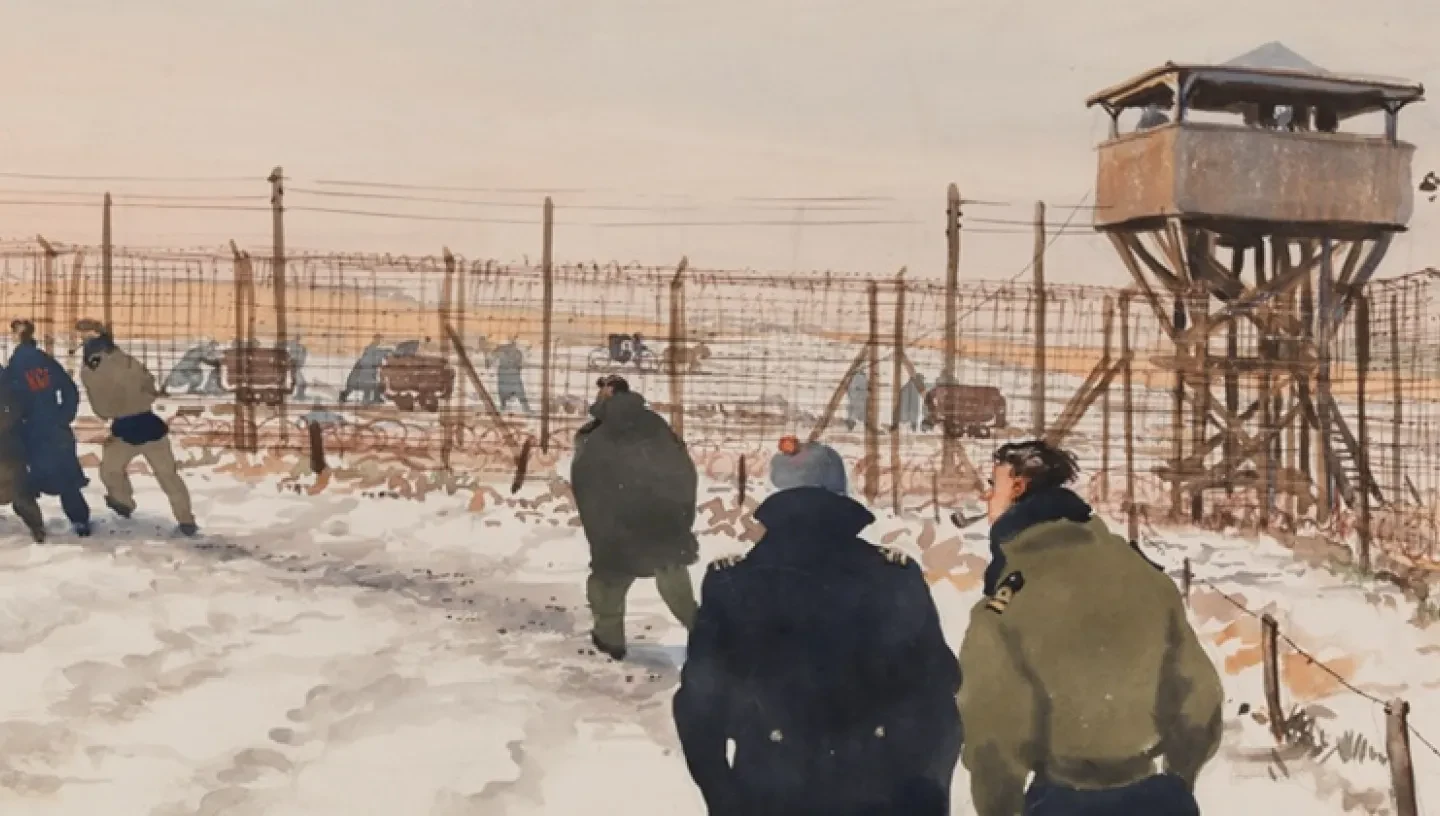
JOD/332 is a log kept by Captain Stanley Algar while a Prisoner of War at the Milag Nord camp near Bremen. However, the diary is not all it seems, while I was expecting to read Stanley Algar’s story of his capture and the gruelling day to day life in the camp, what it contained was quite different.
Sign up to our newsletter
This is where some page specific blurb goes to entice people to give up their email address.
It supports the usual formatting options.
Visit the Caird Library and Archive
“No pen could describe adequately, the longing for one’s home and family, and the ordinary decent things of life that one takes so much for granted, in peace times.
Some will retain mental scars of the last few years, and a certain amount of bitterness. At friends found wanting. Others will return with an increased zest for life, and a deeper appreciation of the ‘real’ things. For some the sense of desperation and frustration at the passing empty years will remain a nightmare
For others these yeas will make them determined to make the future compensation.
And all have experienced hunger in its every form.”
Stanley Algar
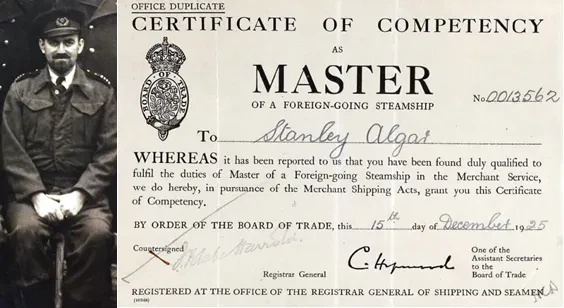
Marlag and Milag Nord were Second World War German prisoner-of-war camps near Breman. They were mostly for men of the British Merchant Navy and Royal Navy though American merchant seamen and U.S. Navy personnel were often detained there as well. Milag Nord camp is where Stanley Algar wrote his wartime log, which begins with a letter from the YMCA:
“Dear Friend,
After the Canadian and American edition of the War-time Log, here is a special issue for British prisoners of war. Though its format is somewhat different, its purpose is just the same as the others: to bring you greetings from friends and to facilitate your recording some of your experiences during these eventful years.
Not everyone will want to use this book as a diary. If you are a writer, here is space for a short story. If you are an artist, you may want to cover these pages with sketches of your camp, caricatures of its important personalities. If you are a poet, major or minor, confide your lyrics to these pages… Your own ingenuity may suggest to you many other ways of using this book, which comes to you with our greetings and good wishes.
Yours very Sincerely,
War Prisoners’ Aid of the YMCA.”
Prisoners of war often received Red Cross packages containing things such as food and cigarettes, what is not often known is the fact that other packages were sent out to the POW’s. A special agreement existed between the YMCA and the American Red Cross resulting in the YMCA providing athletic equipment, books and games for American prisoners in German POW camps. This is how Algar came to write his log as he uses many of the ideas that the YMCA suggested; he wrote about the camp, survival stories, he had other people sketch in it both drawings and caricatures. He slowly built up the life he experienced in the camp, both the good and the bad.
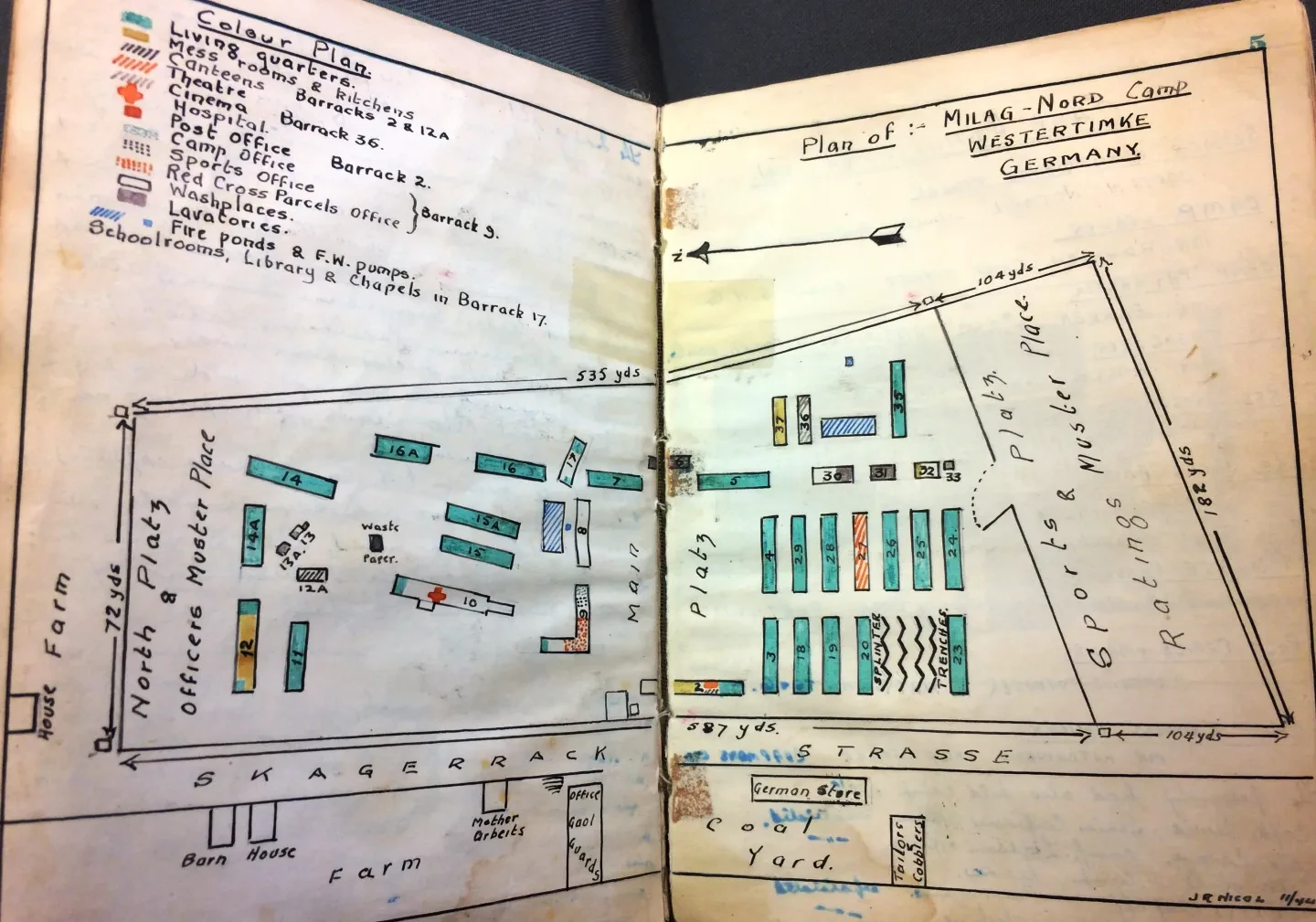
This particular drawing was by Master-At-Arms J. R. Nichol, a merchant seaman who had been serving on the ship, Glenlea at the time of his capture. It identifies the post office, cinema, theatre, schoolrooms, library and the chapel. Many of the cartoon drawings are by Leslie B Lace a Steward who had been on the Sir Ernest Cassel before he was captured. It would seem he used the cartoons to lighten the reality of the world. For instance Algar describes the baths which served both Milag and Marlag camp was a delousing station and a large bathroom with hot water. Each barrack had a regular time allocated to it weekly, all ages and sizes would share the 40 showers. From the images it would seem this led to some embarrassing moments in the beginning as they got used to it.
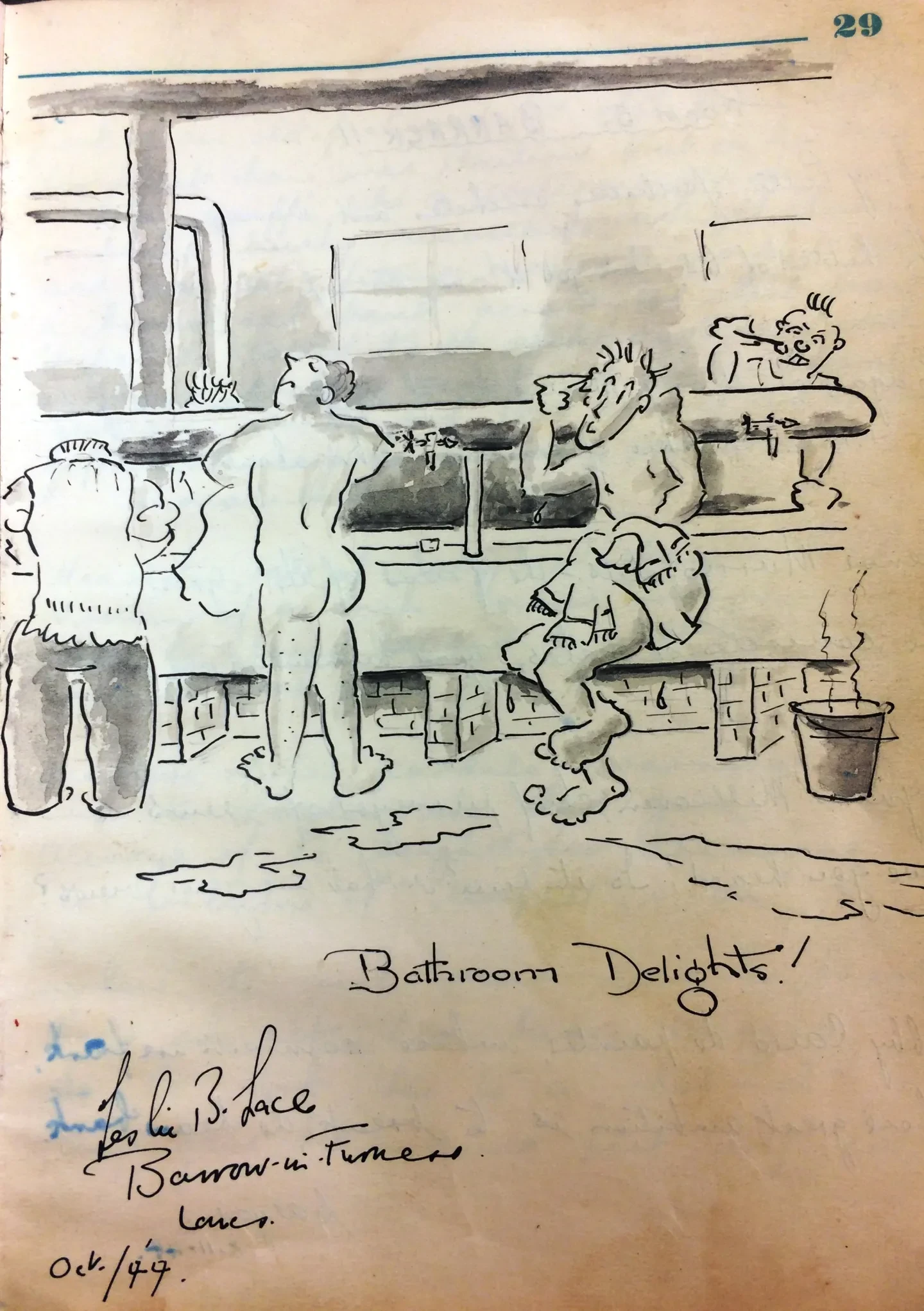
The POWs occupied themselves in various ways. Each camp had its own sports field and there was also a library with around 3,000 books. Prisoners ran courses in languages and mathematics, as well as commercial, vocational, economic and scientific subjects. Sports equipment and textbooks were obtained from the Red Cross and YMCA. Below is another cartoon image by Leslie B. Lance of the prisoners using the equipment’s for gymnastics. Algar states that jam tins were filled with cement and used as weights and one individual took to swinging from tree to tree and was inevitably called Tarzan. The sports were organised and managed by a number of committee boards such as Milag Sports Organisation, Football Control board and Rugby Control Board. Other sports also included cricket, baseball, boxing, Jiu-Jitsu and athletics.
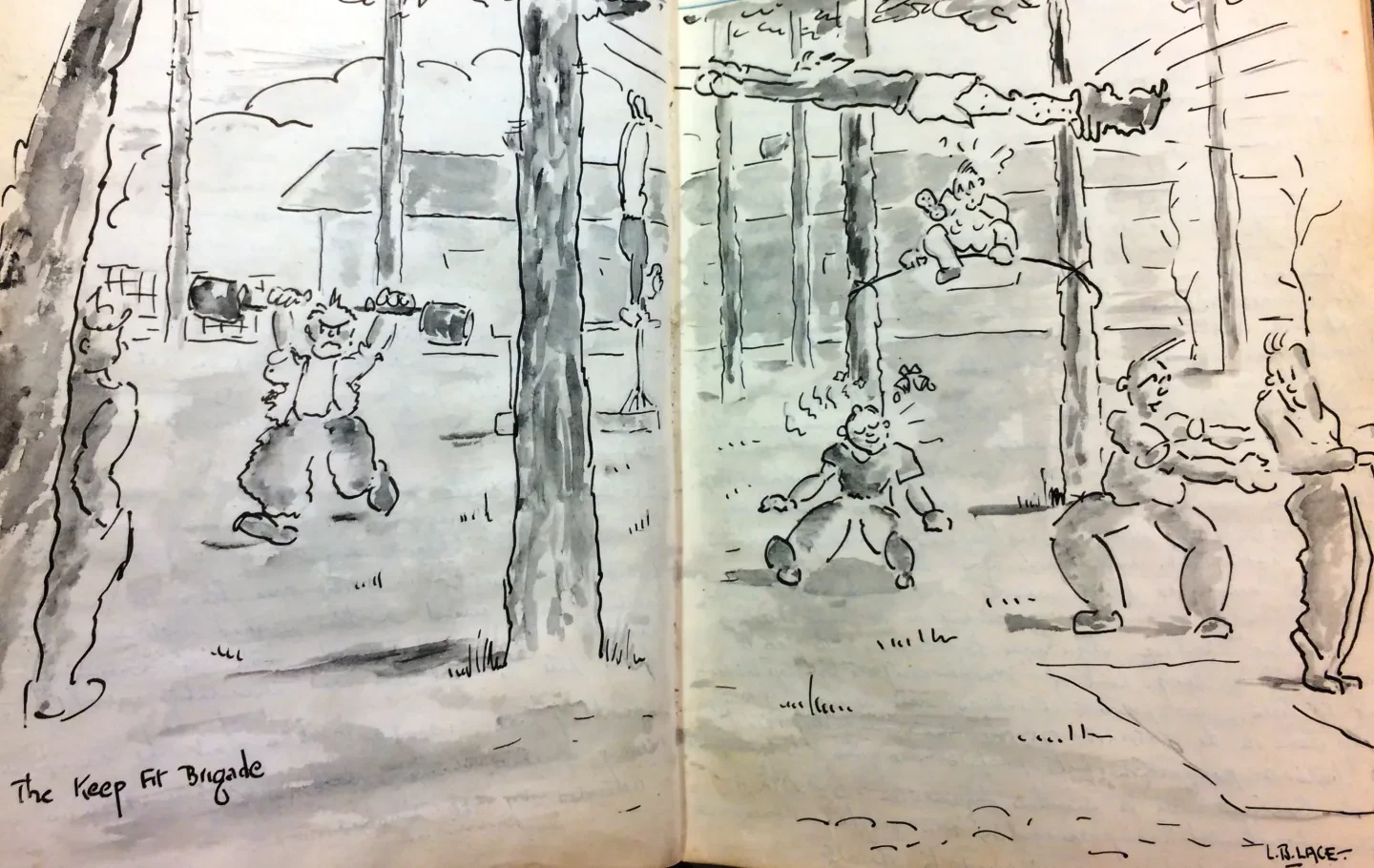
Other entertainment that took place in Milag camp, other than watching Tarzan swing through the trees, included chess, bridge and Crib which were held in two dining halls as well as lectures and dancing. There was also horse racing (otherwise known as the Milag Jockey Commission). They had a school and library consisting on 2492 technical books and over 7000 other books covering fiction, poems, plays, travel, history and political to name a few. There was a camp theatre and the POWs performed concerts and plays. Despite a lack of acting experience these plays were well received. Dresses were hired from the Germans in the beginning but were soon being made by the sailors themselves using bed sheets bought from the Germans in exchange for cigarettes and some material from the Red Cross. Eventually they even managed to print their own programmes. Algar describe the actors:
“Some of the stage ladies still looked like heavy weight all in wrestlers but actors still looked very much the real thing – Shapley pretty girls. One fellow out of the audience said he waited at the stage door for one of the chorus girls until he found out ‘she’ was a fireman!”
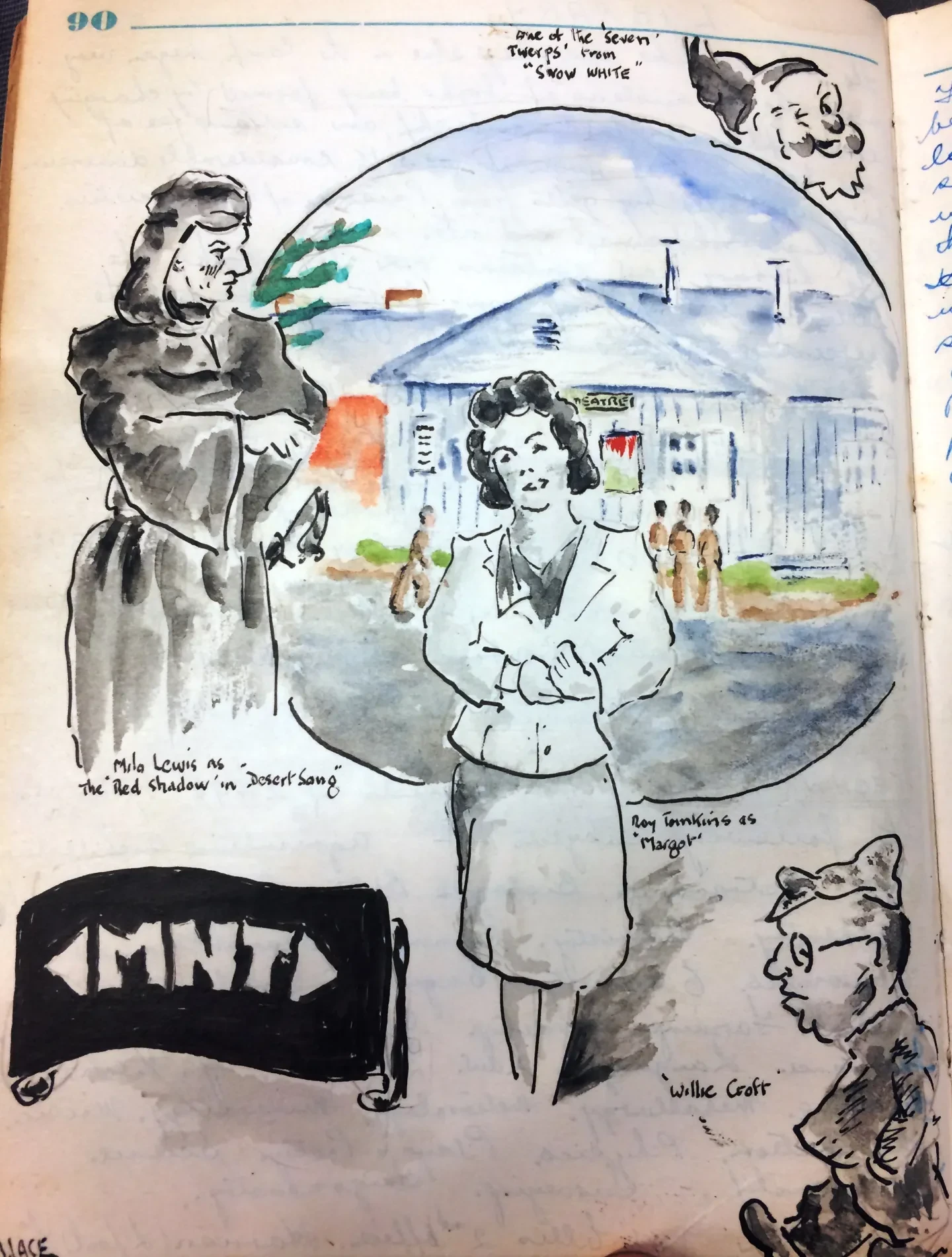
To add to the theatre the camp also had a cinema, for years they had nothing but silent German movies until 1944 when they watched Katherine Hepburn and Cary Grant in ‘Bringing up Baby’ a large success throughout the camp but when there are no new films to watch they used the area for recitals and listening to the wireless.
Most of the journal describes the day to day and although you can hear the authors voice in those little snippets of humour there is also the reminder of the harsh conditions they lived in:
“One prisoner during one of its hunger periods acquired a loaf. He dare not put it in his locker as he knew it might be stolen. To ensure the loaf’s safety he wrapped it up on a towel and used it as a pillow. When he woke up the following morning all that remained of its loaf was the part his head was resting on- both ends had been cut off during the night. “
They never received sufficient fuel to keep the stoves in the rooms going all day. In November 1944 all fuel was stopped, however the sailors found a way around this issue. The trees started to disappear at night. All the wood fencing, seats, shutters and even structural parts of the barracks were pulled down for the fires. One man wrote:
“I think that there will never be,
Left in Milag Nord a tree,
A tree, whose lovely wood is pressed,
Into the bogeys glowing breast.
A tree that looks at God all day,
And in the evening whizzed away,
A tree that may in summer wear,
A swing or hammock neath her hair,
Upon whose back a saw is lain,
And cut in chunks across the grain,
And now the Jerries have told me,
Tis sabotage to pinch a tree."
Interestingly Algar doesn’t write about the rescue. In the back are three newspaper clipping titles ‘At last they are free’ and ‘British Seaman Liberated’ he also noted Two German Notices from the camp office one dated 6th June 1944 about the news of the invasion and one dated 17th June 1945 Captain Wilson Royal Navy that he is to take over the camp and the late commader Korvetter-Kapitan Ragge intends to remain and surrender the camp to the British Army when it arrives.
This diary is an insight, a small window of life on the camp from many peoples view, the touching poems by unknown sailors, the funny cartoons by Leslie lace and the accurate drawings by J. R. Nichol and the humour of Stanley Algar.